Preparing to teach a class on climate-friendly cooking this month was a big wake-up call for me. I learned that nearly 40 percent of the food grown in America is never eaten. I learned that the average household of four loses more than $120 each month to wasted food. (And that was before inflation!) All that wasted food in turn creates greenhouse gas emissions. I also learned that livestock account for about 14.5 percent of the world’s greenhouse gases. Yikes.
All of a sudden I understood that there was so much more that I could do in my own kitchen to be part of the solution. And while I want to share with you the practical tips that I’ve gathered for cutting food waste (and yes, cutting back a bit on meat eating!), I also wanted to pass along that I think making these changes truly requires a mind shift. It starts with letting go of following recipes rigorously. In fact, I think the most important advice I can offer is this: Learn to improvise. On that note, see tip no. 1!
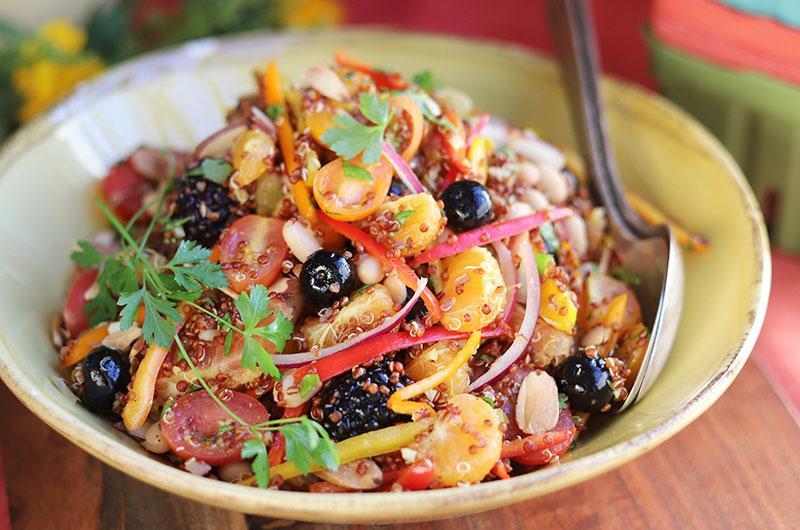
1. Use what you’ve got on hand. Know that if you don’t have the exact ingredients that a recipe calls for, you don’t have to rush out to buy them. Be creative; it will work out! At Fine Cooking magazine, we had a great repeating feature called “Create Your Own Recipe” that detailed a step-by-step technique to follow, but every step offered a variety of ingredients from which to choose. In that spirit, I’ve gathered some “template” recipes for you that are very flexible. This Colorful Quinoa and Fruit Salad with Tomatoes and White Beans is one good example. Make it with any kind of fruit, any kind of beans, your favorite herbs...even make it with a different grain!
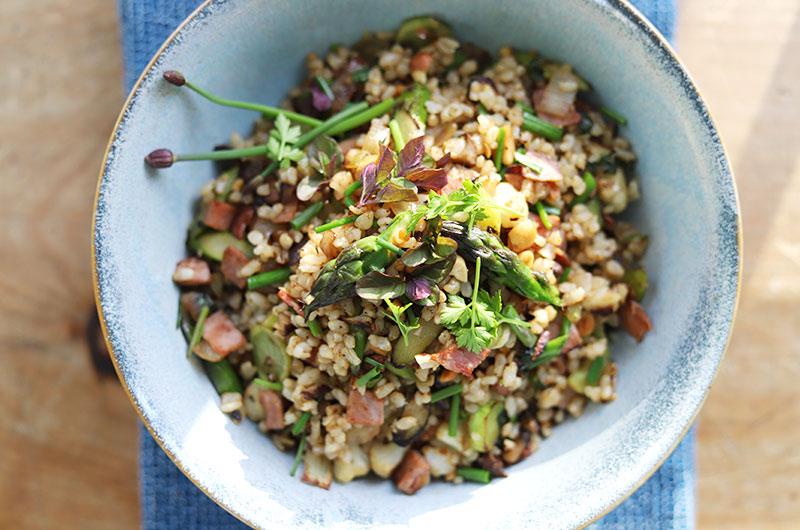
Veggie Fried Rice is another. I made it the other night with sliced broccoli and cauliflower stems, a few mushrooms, a couple of asparagus stalks, an onion, and some aging chives — things I wanted to use up. With ginger, garlic, overwintered mint from the garden, a little soy sauce and leftover brown rice, it was delicious.
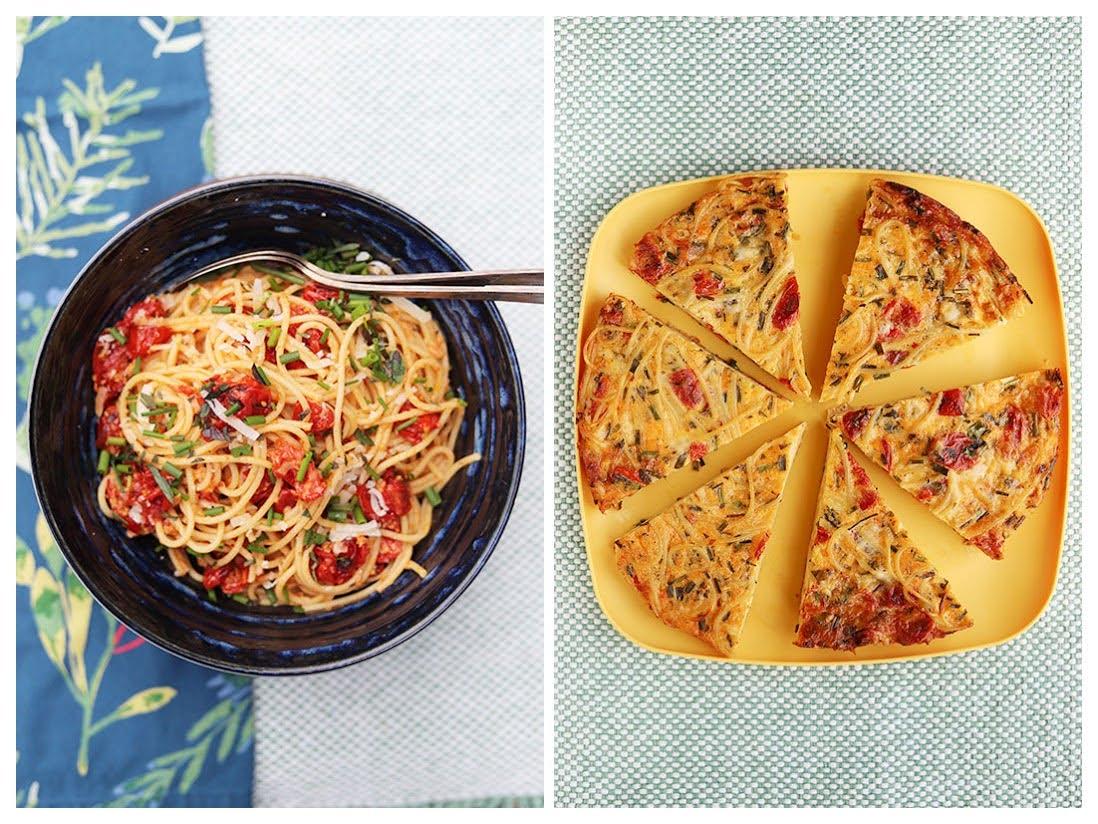
I also love turning leftover pasta into a frittata. While any leftover pasta will work in this Double-Take Pasta Frittata “template” recipe, if you happen to make a double batch of Spaghetti with Roasted Tomatoes and Spicy Garlic Oil (just sayin’), the leftovers are awesome in this frittata. But seriously, use whatever is in your fridge, use potatoes instead of the pasta, or just use cooked veggies. If you make this a lot, you’ll learn the custard formula (8 eggs, 2/3 cup half ‘n’ half) and you’ll know you can make a frittata any night with leftover cheeses and veggies.
Other recipes that work well with substitutions include:
• Toasts (Warm Ciabatta Toasts with Lemony Chickpea Hummus and Sautéed Veggies for one)
• Tacos (Grilled Swordfish Tacos) and quesadillas (Read Improv Quesadillas and 12 More Recipes to Make Your Own)
• Veggie stir-fries (Baby Squash Stir-Fry With Ginger, Garlic and Lime) and sautés (Corn and Bean Sauté with Bacon and Herbs)
• Fritters and pancakes (Corn, Zucchini, and Fresh Herb Pancakes and Japanese Vegetable Pancakes).
• Soup! (Minestrone, Flexible Vineyard Seafood Soup-Stew)
• Savory Bread Puddings (Broccoli, Bacon & Gruyere Bread Pudding)
Using what you’ve got on hand before buying new ingredients (especially ones you may never use up — like a huge bunch of herbs, a condiment jar, or a whole different loaf of bread) is a huge step towards cutting food waste.

2. Use the whole vegetable. This is a fun challenge. Make Carrot-Top Pesto. (By the way, carrot tops are great in flower arrangements, too!) Use the stems as well as the leaves in this Swiss Chard and Peas with Maple-Balsamic Lemon Sauce.
Roasting cauliflower steaks has been a game-changer for me. Not only do I use most of the stem in Roasted Cauliflower Steaks with Smoky Tomato Rub, but I save the outer leaves and stems and slice them up for stir-fries. Don’t throw out those beet greens; sautéed with garlic, they make an instant side dish. I don’t peel beets, turnips, sweet potatoes or tender squash before roasting. Radish and turnip greens, thinly sliced, are delicious in curries and noodle dishes like Soba with Japanese Turnips, Radishes, Greens, Ginger, & Miso.
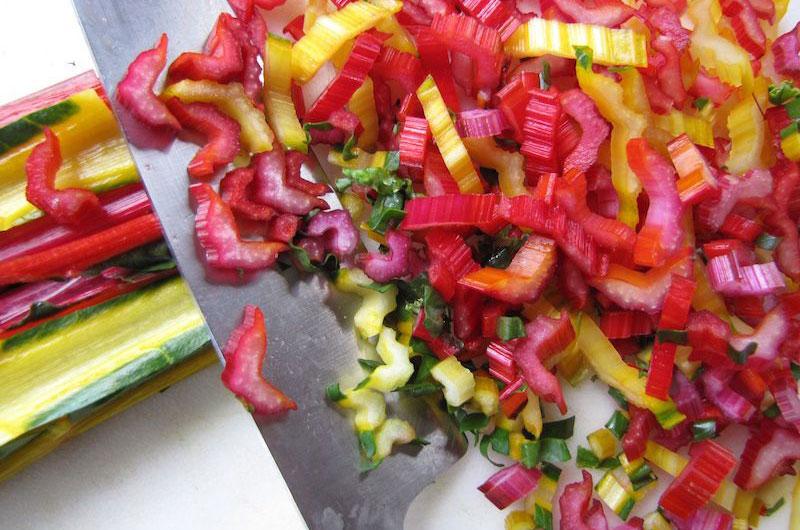
I feel like we’ve been trained to just use the florets of certain vegetables (broccoli, cauliflower) or only the leaves of certain vegetables (like Swiss chard). Looking at those same vegetables holistically is a revelation.
3. Store your vegetables and herbs for longevity! For example, asparagus stays hydrated and lasts much longer if the stalks are placed in a glass of water. You can keep freshly harvested asparagus like that for a few days at room temperature, but the stalks will last even longer if you make room for the glass in your fridge and cover the tips with a plastic bag (secured around the glass with a rubber band). Fresh parsley, cilantro and carrot tops all do well in a glass of water.

And if you harvest basil from your garden early in the morning while it is hydrated, absolutely put it in a tub or glass of water instead of refrigerating it.
If you buy basil at the store, remove it from the plastic box and layer it between slightly damp paper towels in a zip-top bag and refrigerate it. (It needs to be protected from the cold so that the leaves won’t darken.) Most herbs will last longer stored this way. I have also found that Debbie Meyer Green Bags extend the life of lettuce and vegetables like broccoli and green beans. If your veggies or fruits do start to look a little ugly but are still usable, put them in soups, smoothies and stocks. Remember, too, that wilted greens can often be rehydrated in water.
4. Use that freezer.
• Remember Jenny Devivo’s tips for storing leftover broth, tomato paste, pesto and more in ice cube trays? You can also freeze whole tomatoes and cherry tomatoes with no prep at all to use them in sauces later.
• When you get home from the grocery store, freeze the meat you can’t use in the next few days and get in the habit of defrosting overnight in the fridge the day before you need it.
• Freeze whole kale leaves – it’s a tenderizing trick.
• Absolutely slice and freeze bread before it has a chance to mold.
• Also, it’s perfectly fine to buy frozen produce when you can’t find fresh – in many cases, vegetables that are frozen in season have a lower carbon footprint than out-of-season vegetables flown in from far away. Buy and freeze local bay scallops while they’re in season.
5. Plan meals ahead. This seems like old-fashioned housewifey advice, but I’m chagrined to admit that I could really benefit from doing this more. I’m guilty of just buying what looks good, without really thinking through how much I can use in a few days or a week. Pity the languishing eggplant that seemed like a good idea at the store, though making the Baked Pasta with Roasted Eggplant, Tomato Cream and Parmigiano I love was not going to happen on a Tuesday (or a Wednesday) night.
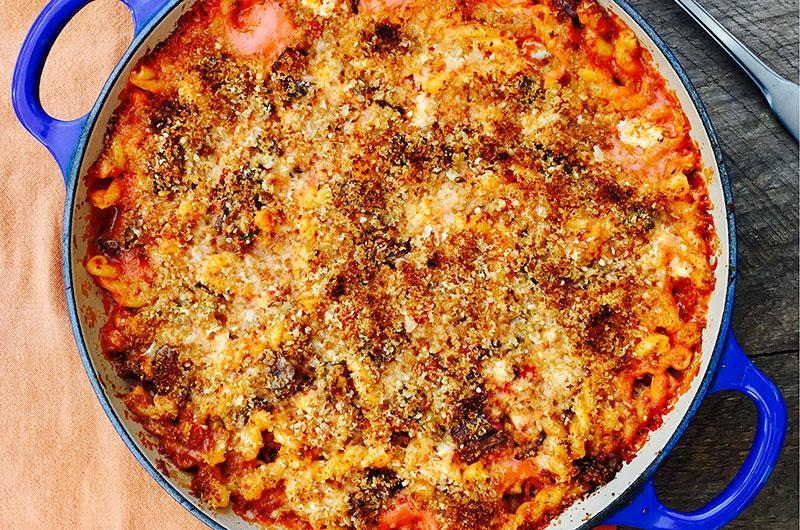
Another good idea (this one from Island Grown Initiative’s Noli Taylor) is to have a bin in your fridge with a sign that says “Use Me First.” Rifle through that crowded fridge regularly and toss things in that bin that need to get used asap.
6. Use meat as a condiment or a side dish. Yep, you knew this was coming. But I didn’t suggest cutting meat out altogether. A simple shift to less meat (particularly beef and lamb) or eating meat less frequently is, according to many climate experts, the single most important thing we as consumers can do to contribute to the reduction in greenhouse gas emissions.
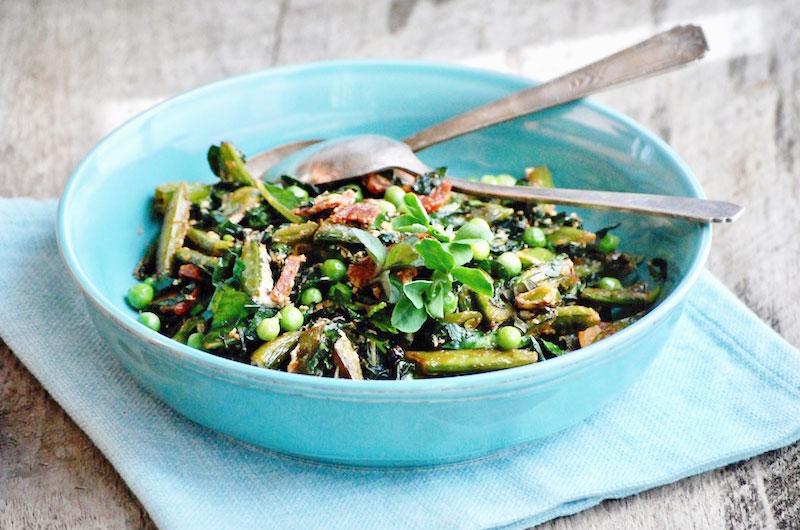
Many of you are probably already doing this, but I find that using a little bit of meat as a condiment (Sugar Snap Peas with Salami Crisps, Smoky Sugar Snap Peas and Greens with Chorizo, Lemon, and Yogurt) or “stretching” meat with other ingredients (Beef and Broccoli Lo Mein) is a great way to go.
On nights when you do skip the meat altogether, load up with “umami” vegetables like mushrooms, tomatoes, and eggplant (Roasted Eggplant and Tomato Gratin with Feta, Leeks, and Herbs; Stir-fried Eggplant, Corn, and Peanut Noodles) that provide a meaty mouthfeel.
7. Eat more local shellfish. We have some of the most climate-friendly protein in the world available to us right in our own backyard: oysters. And because they are (very) minimally processed and travel a very short distance to get to us, eating Vineyard oysters leaves only a very low carbon footprint. Clams are a climate friendly option, too – as is seaweed! Try Oven Roasted Clams in a Garlicky Tomato Pan Sauce for supper.
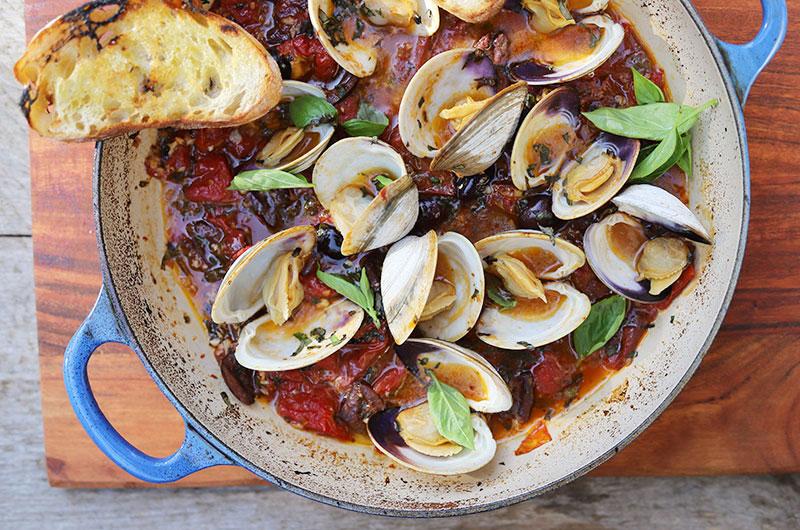
8. Keep your dry pantry stocked with your favorite nonperishable staples. But only your favorite – don’t go crazy! Set yourself up with options so that you can make a quick chili or curry with odds and ends from the fridge. Read Your Pantry is Stocked With Hidden Flavor: 10 Essential Categories to inspire a pantry refresh.
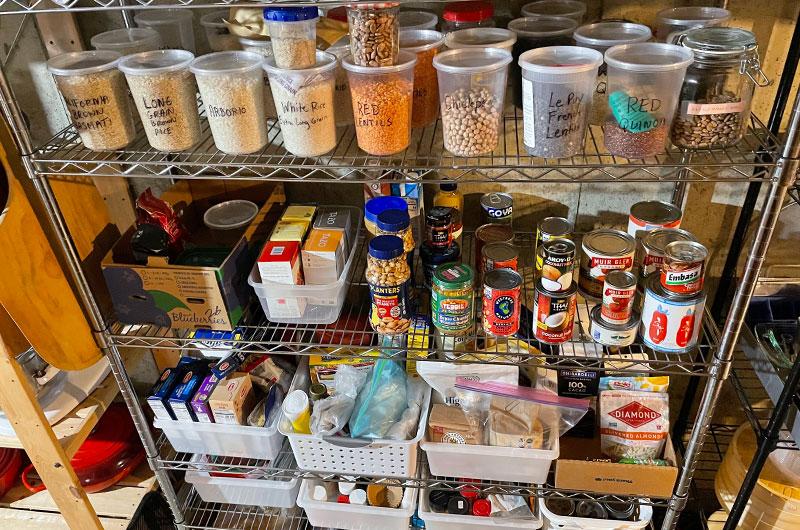
9. Grow a little of your own food and shop for locally grown food as much as you can. If we all grew only a little bit of our own food, we would cut down significantly on our carbon footprints. Here’s a great piece to help you start a veggie garden. Including as much locally grown food in our meals is our next best bet. But experts are quick to point out that eating what is seasonally available, no matter where it is grown, is crucial. Tomatoes grown in heated greenhouses out of season are energy hogs, even if they are grown nearby.

10. Take advantage of Island composting. If you want to start your own compost pile, read Composting, Uncomplicated. But if you’re not in a position to do that – or you still have food waste like meat bones and dairy that aren’t appropriate for a home compost pile, you can drop off your compost at any Island transfer station (look for the black bins) or at Island Grown Initiative.
Susie Middleton is editor of Cook the Vineyard.







